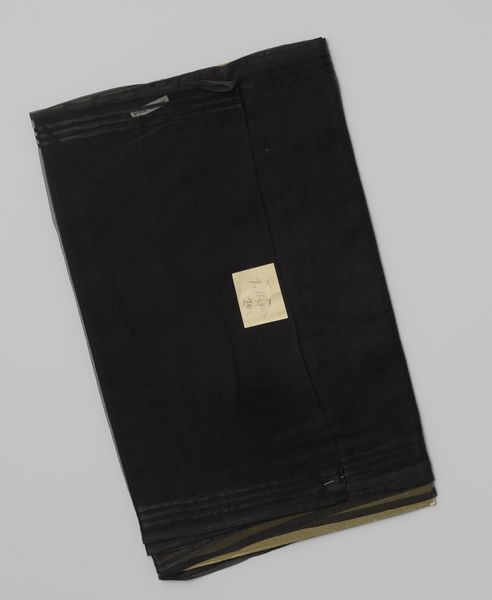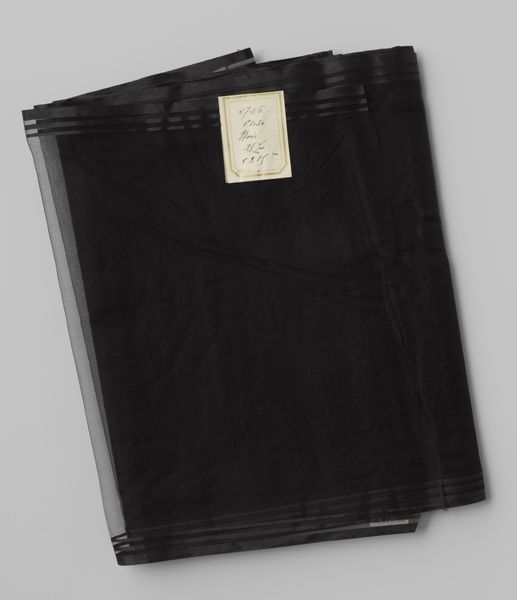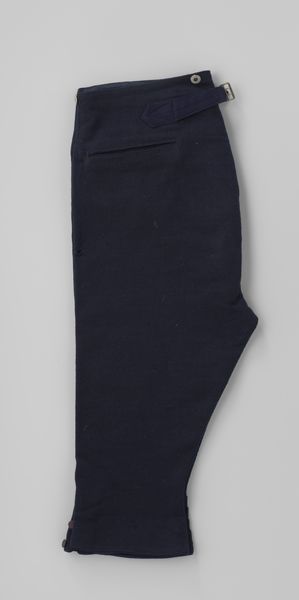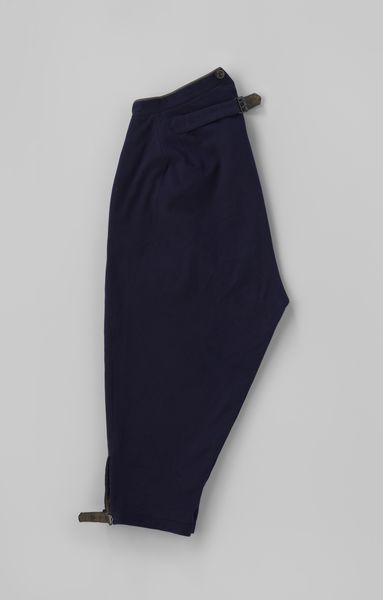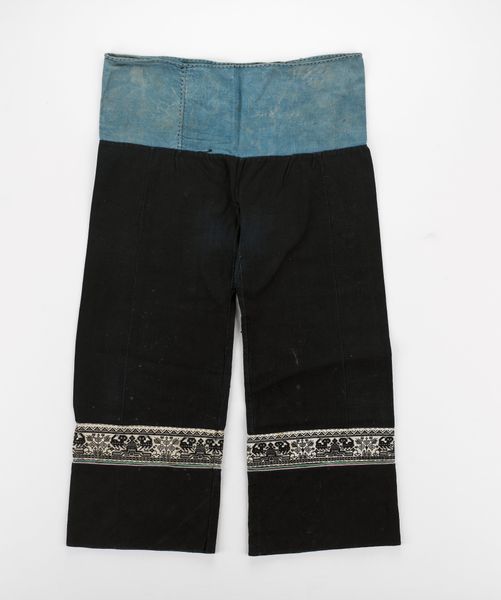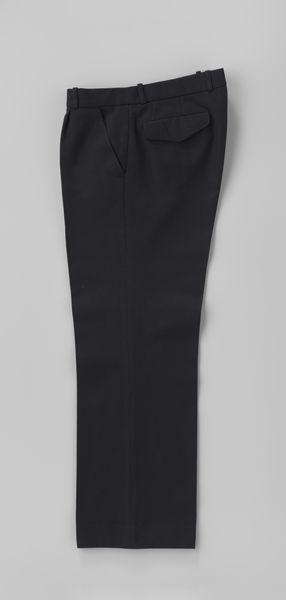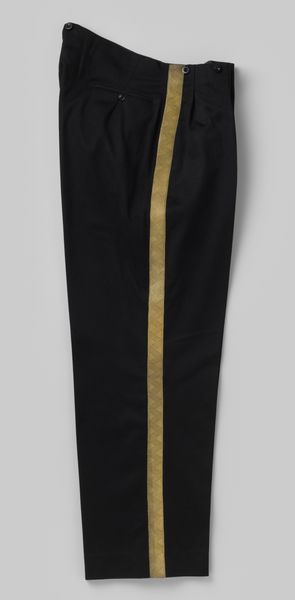
Coupon zwart parasolgaas aan weerszijden afgezet met drie naar buiten toe breder wordende ingeweven zwarte satijnen strepen c. 1900 - 1925
0:00
0:00
gustavschnitzler
Rijksmuseum
photography
#
studio photography
#
product shot
#
still-life-photography
#
fashion mockup
#
studio lighting mockup
#
photography
#
product design photgrpaphy
#
folded paper
#
metallic object render
#
product mock up
#
decorative-art
#
studio mock-up
#
product render
Dimensions: width 35 cm, length 23.5 cm, height 1.1 cm
Copyright: Rijks Museum: Open Domain
Curator: At the Rijksmuseum, we have an intriguing photograph from circa 1900-1925 attributed to Gustav Schnitzler, titled "Coupon zwart parasolgaas aan weerszijden afgezet met drie naar buiten toe breder wordende ingeweven zwarte satijnen strepen," which, as you might guess, translates to “Sample of black parasol gauze trimmed on both sides with three outward widening woven black satin stripes.” Editor: Well, right away, the striking thing is the monochrome. That stark black gauze, almost swallowing the light. It’s folded neatly but somehow still exudes this feeling of potential energy. Curator: I see what you mean. Black has often signified both elegance and mourning. Considering this was a swatch intended for parasols, it speaks to how even functional items carried potent social symbolism, particularly regarding women and visibility, or perhaps invisibility, in public life. Editor: Exactly! The satin stripes catch the light, and my eye is drawn to how it's constructed. I mean, who would consider the material cost and the weaving process itself? The price indicates a consumer culture obsessed with textiles and ornamentation. Curator: True, the craftsmanship elevates the piece. It’s not just material, it embodies an aspirational aesthetic. Consider the original purpose, offering shade, yes, but also maintaining a degree of fashionable mystery, of veiled allure. That black adds another dimension. Editor: This image makes me think about labor too, though. Producing this fabric requires labor. Someone designed the pattern, and then many someones painstakingly created this sample to be sold to another someone with disposable income… Layers of making at different levels! Curator: Absolutely. It underscores that behind this beautiful object, we must acknowledge these layers, which also included the photographic labor itself to create the promotional images, such as this product shot. Editor: Yes, to be put it this way: We aren't just seeing fashion; we're looking at fashion, capital, labor and how these forces collide. It reframes our thinking and gives a tangible dimension to historical labor forces. Curator: Agreed. Thinking through those complex relationships, helps illuminate the deeper cultural narrative imbued into even the simplest artifact. Editor: This simple material, with layers and folds, becomes a time capsule, reminding us about consumerism and social aspirations a century ago.
Comments
No comments
Be the first to comment and join the conversation on the ultimate creative platform.
